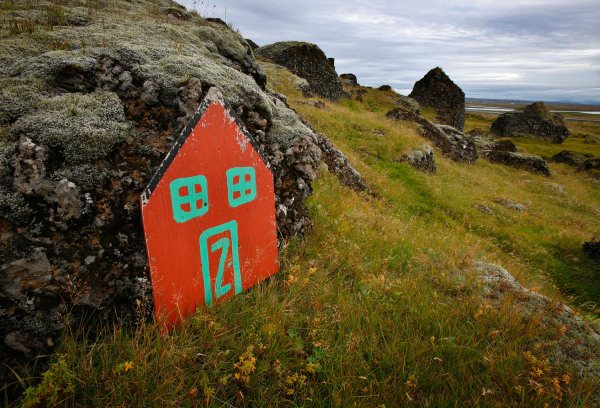Faeries ~ Truth and Legends of the Fairy Folk
FairyTuatha De Dannan
Tuatha De Dannan
Legends of faeries have been around for thousands of years... but what exactly are they? The word itself is a combination of Middle English and French spelling, however there are other cultures who have legends of these creatures under different names. In Ancient Rome, they were called "fata", meaning one of the Fates of Roman mythology. In Greekmythology, they were part of the Moirai, which was essentially the same thing. These creatures decided the fate of people. In Ireland, legends speak of another race... the Tuatha De Dannan, which were thought to be the "people of the gods".
In English, it became the word "faie" and had the suffix "erie" or "ry" added to it... and came to mean otherworldly creatures who performed specific tasks. It has diversified meanings, anything from being extremely helpful (such as the "brownie" or the "sprite" which would come into homes and clean or otherwise assist while the residents were asleep) orhaving evil connotations, mainly from Christian propaganda. They are represented in many forms, from child-like winged creatures, to imposing, larger than life elementals of nature.
 The four elements of earth, air, water and fire are thought by some to be where faeries originate. By this belief, they are not only creatures meant to help... they are essential to the balance of these elements. This type of faeries have made appearances in literature... such as the Lady of the Lake giving King Arthur the Sword of Excalibur, and the manyrenderings of winged sylphs that we have become familiar with. These creatures live in harmony with these elements. Fire faeries (or salamanders) are often thought to be mischievous and destructive in nature.
The four elements of earth, air, water and fire are thought by some to be where faeries originate. By this belief, they are not only creatures meant to help... they are essential to the balance of these elements. This type of faeries have made appearances in literature... such as the Lady of the Lake giving King Arthur the Sword of Excalibur, and the manyrenderings of winged sylphs that we have become familiar with. These creatures live in harmony with these elements. Fire faeries (or salamanders) are often thought to be mischievous and destructive in nature.
Red Cap Goblin
Another belief, taken from Persian mythology, is that faeries are creatures that were once angels. In this legend, when Lucifer and some of the angels revolted against God and were cast out... there were some that got "caught in the doorway" so to speak. It is thought that they were strongly persecuted by demons, as they lacked the strength to stand up andtake one side or the other in their war against God.
Korrigan the Celtic Forest Elf
 Nothing did more to seal the negative connotation of faeries than the advent of the Puritan movement. The brownies, sprites, and hobgoblins of yesteryear went from being helpful spirits that were welcomed to evil demons out to destroy souls. The faeries of legend fell to the way of anything that was considered "witchcraft" or "wizardry". Anyone thought tobe encouraging their presence was dealt with in the same manner by religious authorities as "witches" or "sorcerers" were. While this severe form of control did not last into modern times... its effects are felt to this day.
Nothing did more to seal the negative connotation of faeries than the advent of the Puritan movement. The brownies, sprites, and hobgoblins of yesteryear went from being helpful spirits that were welcomed to evil demons out to destroy souls. The faeries of legend fell to the way of anything that was considered "witchcraft" or "wizardry". Anyone thought tobe encouraging their presence was dealt with in the same manner by religious authorities as "witches" or "sorcerers" were. While this severe form of control did not last into modern times... its effects are felt to this day.
Beliefs in faeries as otherworldly creatures has been around for centuries. They have appeared in paintings and in literature, mainly as the winged creatures of children's stories we have all enjoyed. In Gaelic folklore however, they are very powerful beings, descended from gods and goddesses. They are known as the Aos Si, or the "people of the mounds".The mounds where they are thought to exist are called "sidhe". These beings were thought to be tall and incredibly imposing. The people of the villages would refer to them as the "Fair Folk" or the "good Folk" (smiling all the time in hopes that their positive affirmations would keep them in good standing!).
A collection of writings known as the Lebor Gabala Erenn speaks of the legends of Ireland and these people (known also as Tuatha De Danaan). According to Irish mythology, they were one of the earliest groups of people to settle there. The legends say that the battles and invasions of other races wore them down and they retreated to the many hidden mounds(known as the sidhe)... and some believe they never left. Many of these mounds have been discovered to be ancient graves... which to some gives even further credence to their souls remaining there.
Many Scottish legends classify faeries as two types... both are powerful, but the Seelies are known for mischief and tomfoolery, while the Unseelies are more dangerous and malevolent. One of the most disturbing legends of faeries that shows up in many different folk tales is that of the changeling. The changeling was when it was believed a human baby wastraded for a fairy child. Depending on the tale, the human child either lived happily in their new environment or was miserable, longing for the life of a human being.
Cottingly Fairy
With all of the legends circulating about these mysterious creatures, it begs the question... is there any grain of truth to it all? Supposed documentation of faeries came about in the early 1900's with the Cottingly case. Two cousins claimed to have caught several photographs of themselves with almost storybook-like images of what appeared to be faeriesin Cottingly, England. They even captured the interest of Sir Arthur Conan Doyle, author of the famous Sherlock Holmes stories. Technology and the later confession of Frances Griffiths, one of the cousins in 1983 indicated the photos are clever fakes.
Many legends and myths have some basis in history... it is thought that what are believed to have been gods and goddesses of ancient times may have actually been great leaders deified as such. Are the ancient mounds in the sprawling countryside of Ireland actually where the Aoi Si were forced underground after so many invasions? It is thought that whenthey went to live within the confines of the
mounds that they entered a dimension outside of our own... a dimension running parallel with ours. If not immortal, maybe these mound dwellers lived there underground until they perished.
Or maybe... their descendants exist there today!
Written by Angela Sangster, Copyright 2010 TrueGhostTales.com
Fairies of the Meadow






























